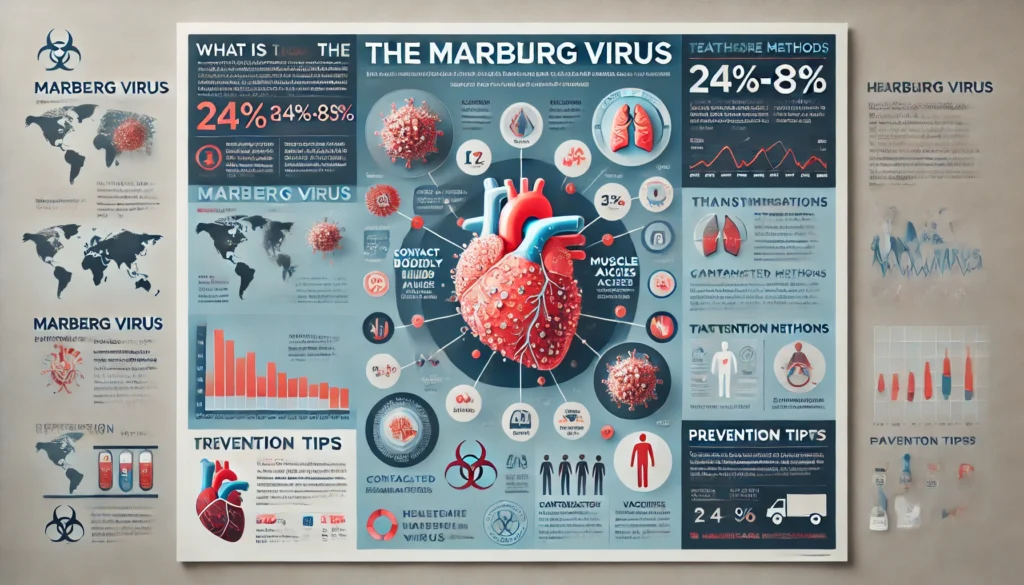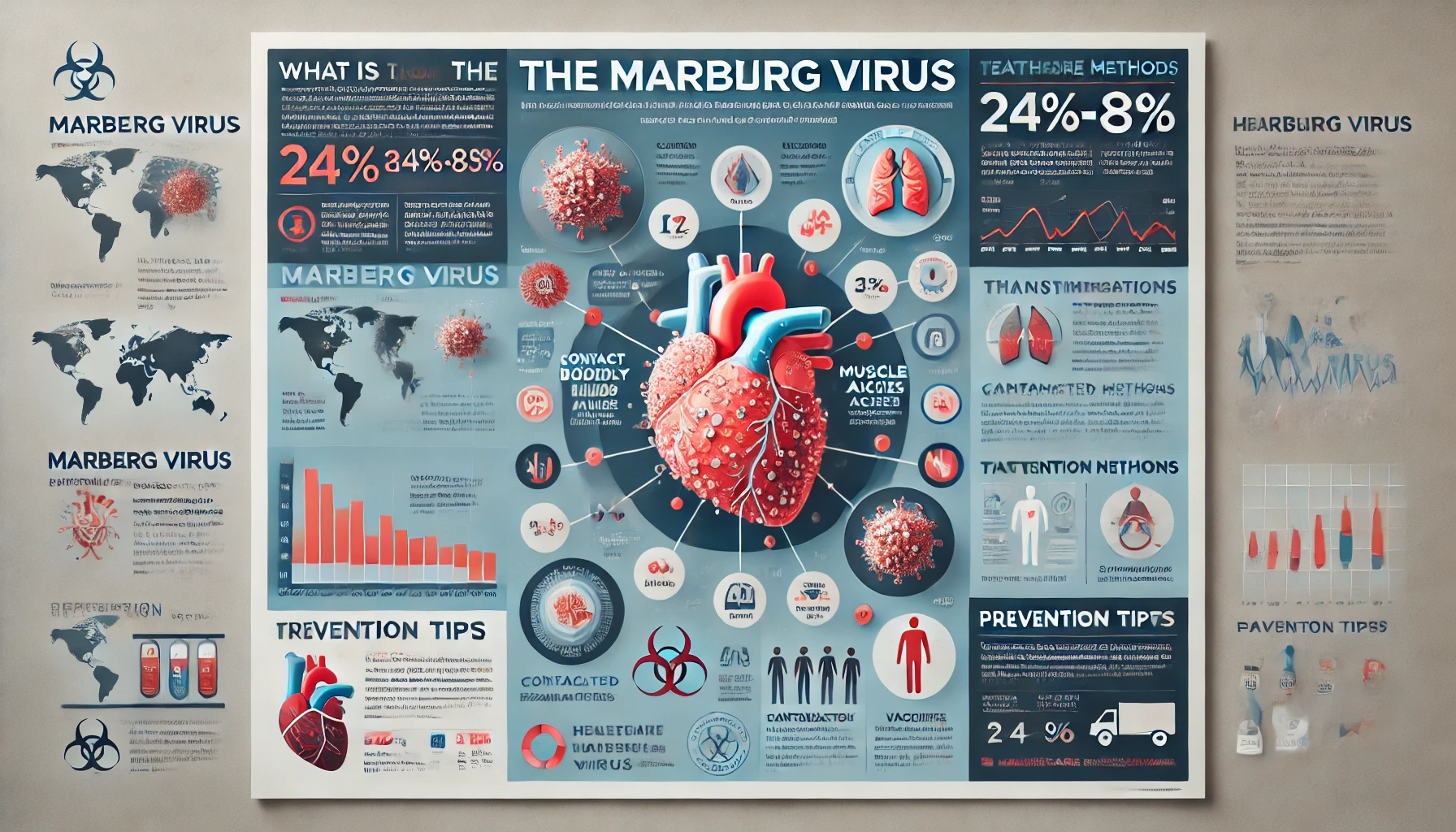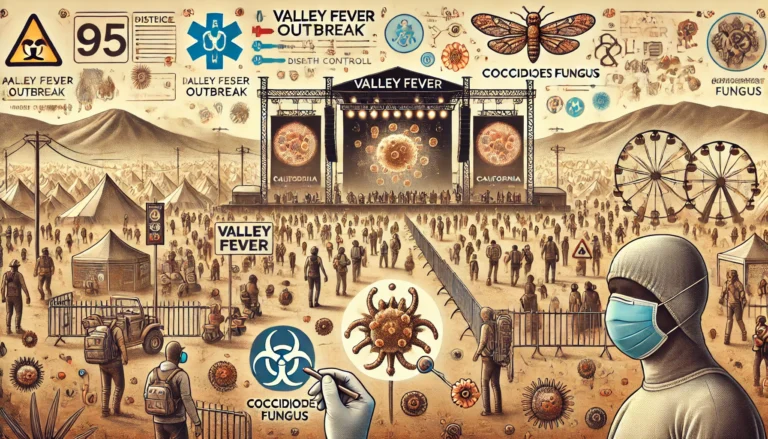Understanding the Marburg Virus: A Growing Global Health Concern
The detection of the Marburg virus in the new country is another formidable challenge to the global health community that is detecting Ebola-like disease. And as that rare but highly deadly virus continues to break out, governments, health organizations and individuals alike need to understand its implications.
Though not as well known as other serious infectious diseases, the Marburg virus remains a threat to causing large public health crises in areas with poor health care infrastructure. In this article we explore the nature of the Marburg virus, how it is transmitted, its symptoms, and the measures being taken to prevent spread.
What Is the Marburg Virus?
The Marburg virus is a member of the Filoviridae family of viruses very related to the Ebola virus. Both viruses also cause hemorrhagic fevers (severe illness with bleeding, organ failure and often death). The disease is believed to come from fruit bats, particularly Rousettus aegyptiacus species, which are thought to act as the disease reservoir.
Highlights on human and non-human primate disease with outbreaks commonly associated with direct contact with infected animals or their bodily fluids. The virus’ high fatality rate (up to 88% in some outbreaks or with poor care) makes it notorious.
Transmission and Spread of the Virus
The Marburg virus spreads much like Ebola; via the direct contact with body fluids, like blood, saliva, urine, or vomit, of an infected individual. If proper protective equipment is not used there is a high risk (particularly in healthcare workers and close contacts with infected individuals and family members) in the absence. Contaminated surfaces and objects including bedding and clothing may also be a source of the infection.
Read more: Rising Threat of Antibiotic-Resistant Bacteria in Newborns: A Growing Concern in Nigeria

Unlike COVID-19, the virus is not airborne and therefore its transmission potential is much less more so than other respiratory diseases. Although its ability to rapidly disseminate within communities, especially within resource poor settings, has made it a major public health threat. Just recently there have been many cases of the Marburg virus appearing in new countries and it is very important that containment efforts are undertaken immediately in order to stop people becoming infected.
Over the past few decades Marburg virus has been detected in several African countries, including Guinea, Uganda and the Democratic Republic of the Congo, with most recent outbreaks in 2017. In 2004 alone, more than 227 people died of the virus in Angola. It was clear in the high death toll, as well as the lack of ability to contain that international cooperation and swift response was needed.
Another country has reported cases of the Marburg virus, sparking alarms from global health organizations that the virus is not dead. However, the virus’s high mortality rate and the ability for such outbreaks to overwhelm healthcare systems has made monitoring such outbreaks a priority for both the World Health Organization (WHO) and the Centers for Disease Control and Prevention (CDC).
Read more: Oropouche Virus Outbreak in Cuba: What U.S. Travelers Need to Know
Symptoms and Diagnosis
The symptoms of the Marburg virus are similar to Ebola. It is difficult to distinguish between the two diseases without laboratory testing. Early symptoms include:
- Sudden onset of high fever
- Severe headache
- Muscle aches
- Fatigue
Patients may have gastrointestinal symptom such as nausea, vomiting, diarrheas’ as the disease develops. The virus in severe cases leads to hemorrhaging, with bleeding from the nose, gums and all other orifices. Fatal cases are common with multi organ failure and shock.
The diagnosis is usually confirmed by PCR test, which is a test to find viral RNA in blood samples. But often, place where many outbreak prone areas fail to have a sophisticated diagnosis technology leaves out infected individuals from identification and isolation, further complicating the contents of the outbreak.
Read more: Massachusetts Reports First Human Case of Eastern Equine Encephalitis (EEE) in 2024
Treatment and Vaccine Development
There are no approved antiviral treatments for the Marburg virus, and medical care is largely supportive including parenteral fluids; supplemental oxygen; treatment of specific symptoms; monitoring and treatment if electrodes (dialysis), artificial lungs, heart, or bone marrow transplant, are required; and palliation. It’s consistent with the way we treat other viral hemorrhagic fevers, which is to manage symptoms in an effort to improve survival rates.
Read more: Scurvy: An Ancient Disease Making a Comeback Among Children
There has been recent advancement in vaccine research. Early stage clinical trials of Marburg virus vaccines have been promising, but scientists have been looking into the development of such vaccines. The technology behind the successful Ebola vaccine has also been used to develop an experimental vaccine, rVSV-MARV, which has previously been shown to work in preclinical studies. It is still in the experimental phase, and years away from widespread distribution.
Marburg Virus Fatality Rate by Country
In response, global health organizations have stepped up the fight with surveillance, campaigns educating the public about the spread of Marburg and in training healthcare workers in geographic locations where the virus is active. WHO has put together rapid response teams in affected countries to help contain outbreak and provide the technical and logistical support.
To prevent further outbreaks from going to uncontrollable levels, health emergency programs aimed at early detection and reporting are needed. Organizations such as Doctors Without Borders and the Red Cross have also been a big part of bringing the resources we need like personal protective equipment (PPE), medical supplies, training, aid to healthcare workers on the frontlines.
Read more: Zoonotic Disease Threats from Animal Industries: A Growing Concern
Key Recommendations for Prevention and Containment
In light of the ongoing outbreaks, recommendations can help reduce the risk of transmission of the Marburg virus:
- Strengthening Healthcare Infrastructure: Governments, in regions vulnerable to outbreaks in particular, should put resources into building healthcare infrastructure (such as creating isolation units and ensuring hospitals are well stocked with certain medical supplies).
- Public Awareness Campaigns: It is important to raise awareness over the risks of coming in to contact with fruit bats (or other animals that may carry the virus). Education of communities about these symptoms and advise them to get quick medical help if they experience any of it.
- International Collaboration: The collaboration between government, international health in charge of, and NGOs is continued. Data sharing, developing vaccines and providing assistance to areas that are affected should be the efforts.
- Research and Development: Priority should be directed towards investment in research of vaccines and treatments and in particular that of promising candidates such as rVSV-MARV.
- Travel and Trade Restrictions: Whenever the virus is active — and that’s what you’ll see this summer wherever you go — it’s equally important to enforce travel and trade restrictions in order to stymie its spread across borders.
Though less well known than Ebola, the Marburg virus is a deadly threat to global health because of its high fatality rate and rapid spread. The fact that the virus is still being detected in never before seen regional areas also demonstrates the need to continue to watch for the enemy, to continue to collaborate internationally on this threat, and to continue investment in healthcare infrastructure. It is possible to contain the Marburg virus and avoid future outbreaks from becoming massive pandemic, the researchers say, if public awareness, timely medical intervention, and progress in vaccine development is made.
Read more: Mpox Outbreak in Congo: A Health Emergency Unfolding
Test Your Knowledge About the Marburg Virus
Reference List
- Nexstar Media Wire. What is Marburg virus? Outbreak of Ebola-like disease detected in yet another country. The Hill, October 4, 2024.
- World Health Organization (WHO). Marburg virus disease. World Health Organization, March 2024.
- Centers for Disease Control and Prevention (CDC). Marburg Virus: Symptoms & Treatment. Centers for Disease Control and Prevention, August 2024.
- Doctors Without Borders. Tackling the Marburg virus: What we know so far. Doctors Without Borders, September 2024.
- MedPage Today Staff. Vaccine Trials for Marburg Virus Show Early Promise. MedPage Today, June 2024.
- World Health Organization: 2024 Marburg Virus Outbreak. World Health Organization, September 2024.
- Centers for Disease Control and Prevention (CDC). Preventing Marburg Virus Transmission. Centers for Disease Control and Prevention, April 2024.








As a result, I’ve seen infectious diseases spread fast among communities to wreck havoc within places. The Marburg virus is highly contagious with a mortality rate as high as 88% — and I’ve worked on other outbreaks, so that brings back memories. WHO has said its Ebola-like symptoms and its potential for widespread spread make it a serious global health threat.
It’s important to say early detection, isolation and community education as an advocate of public health because of what it can do. I also urge others to write their opinions on how we can beef up our preparedness and response to outbreaks like this. What do you think it takes to contain threats such as Marburg in the future?